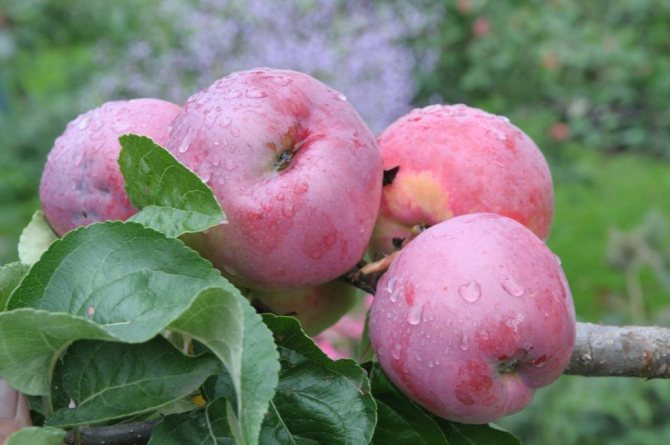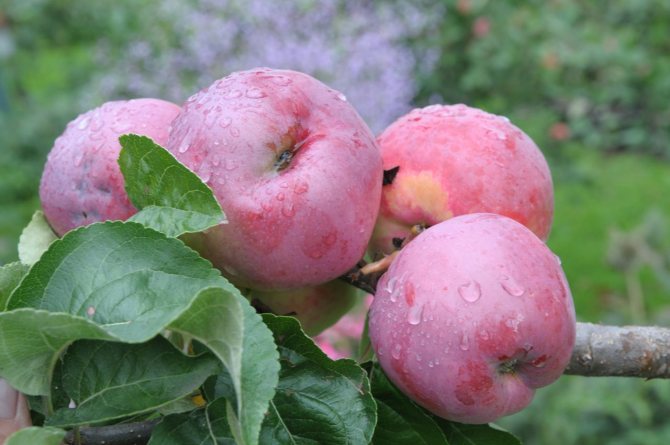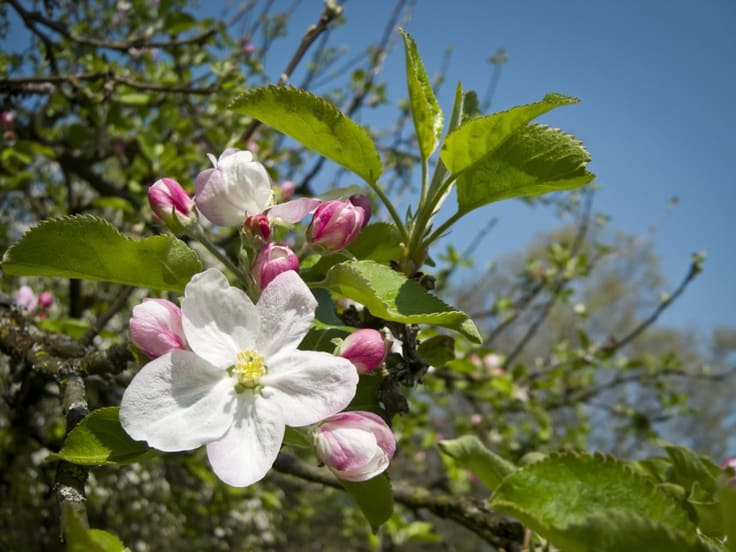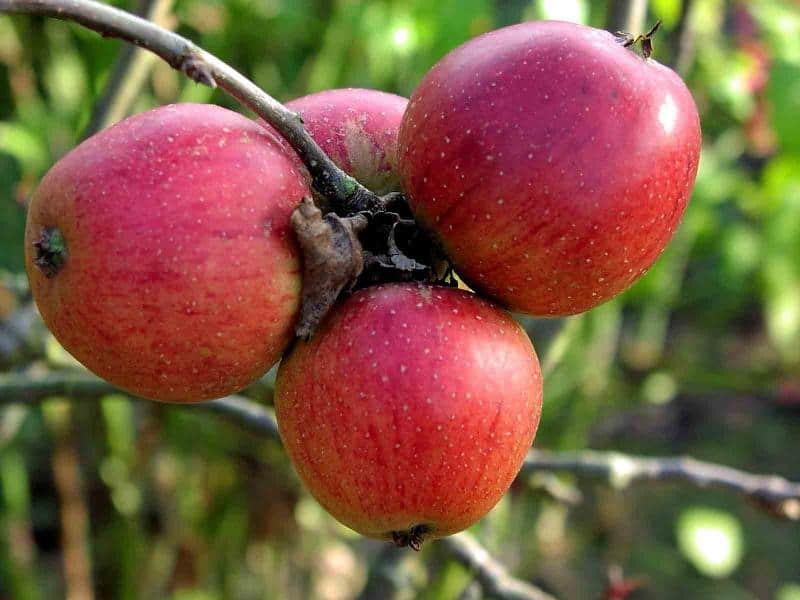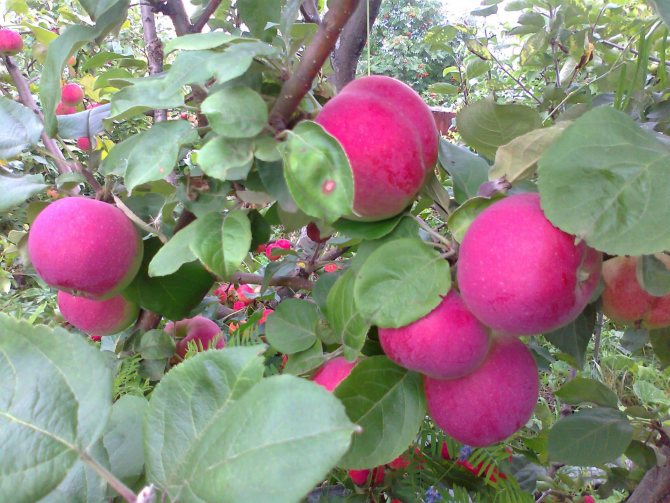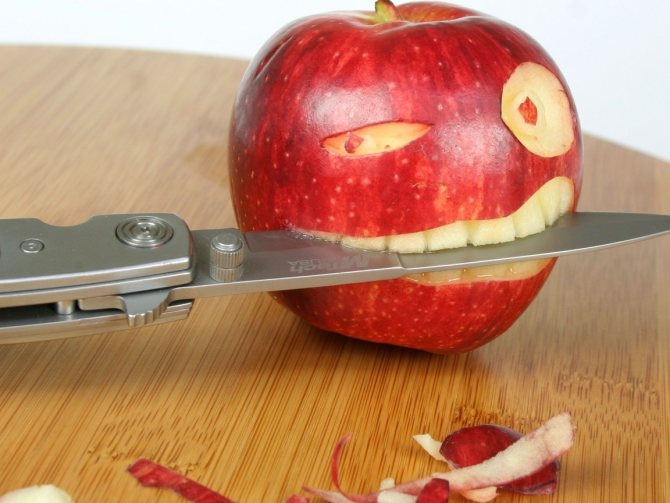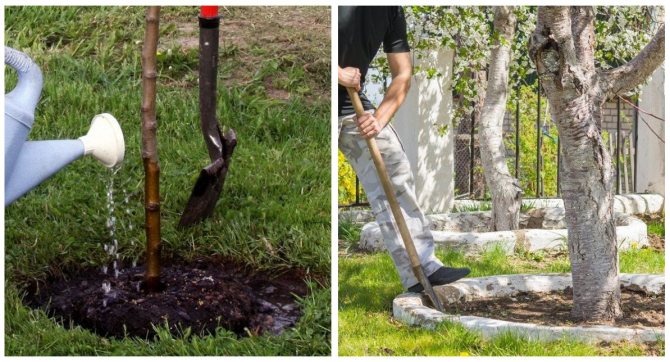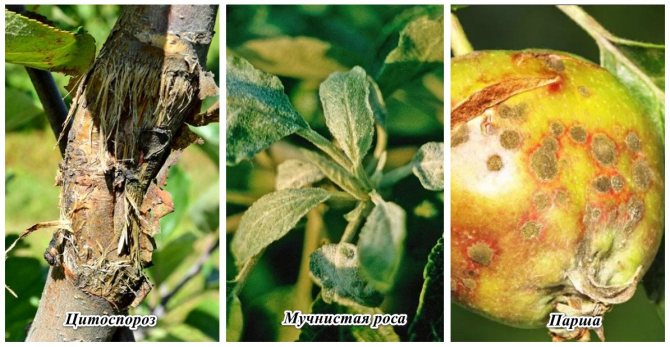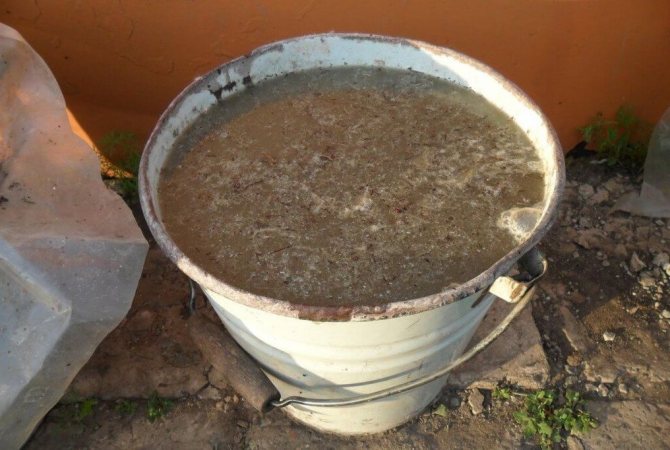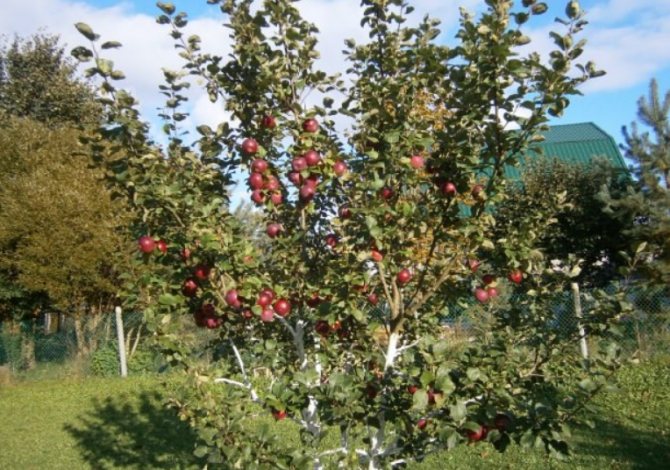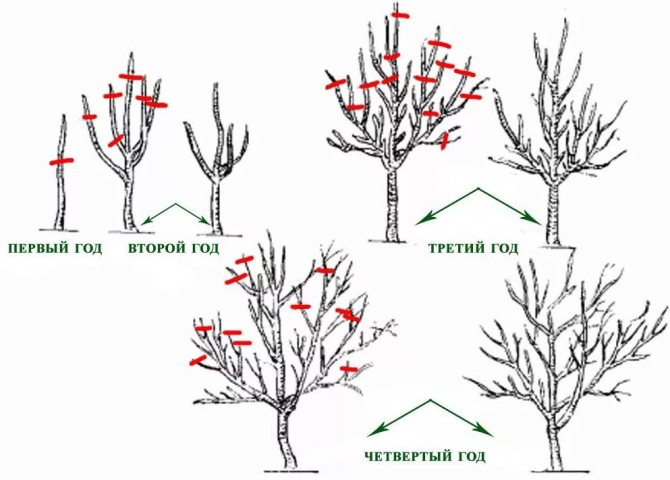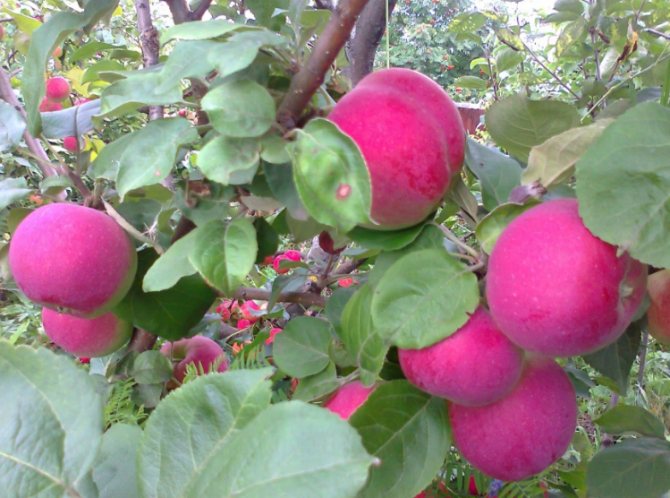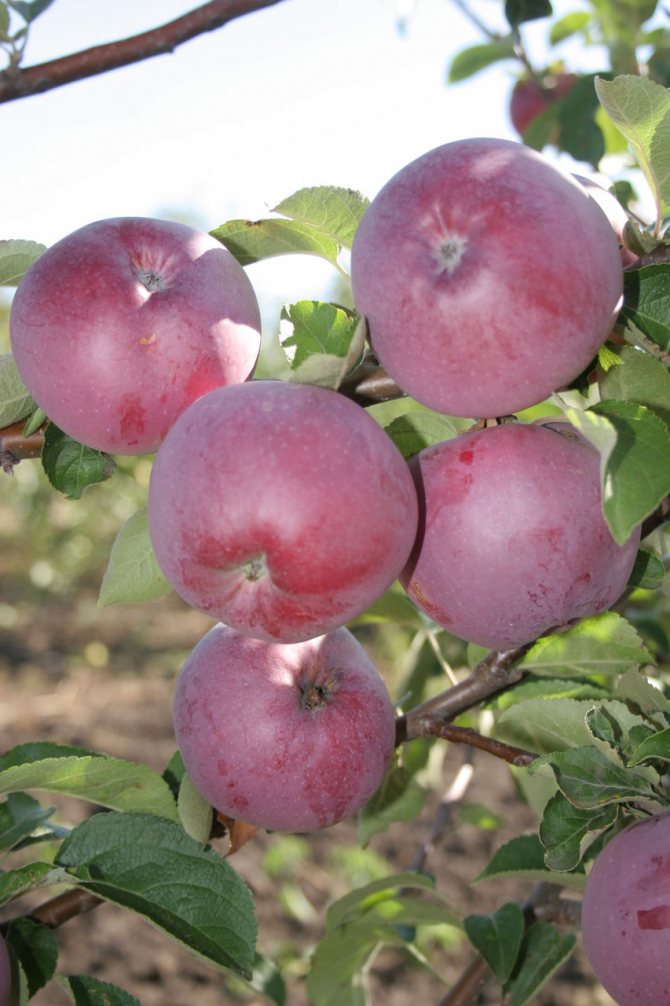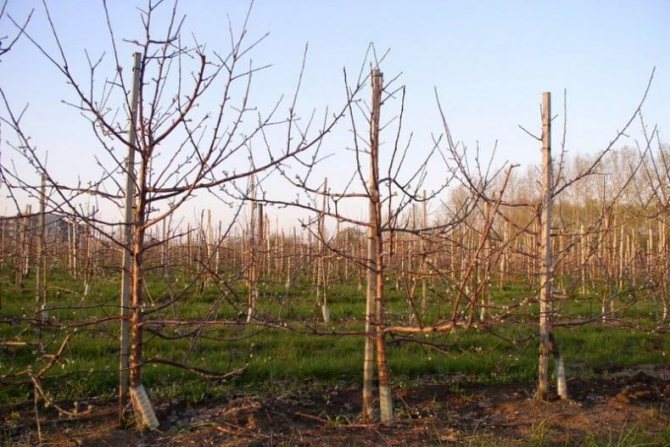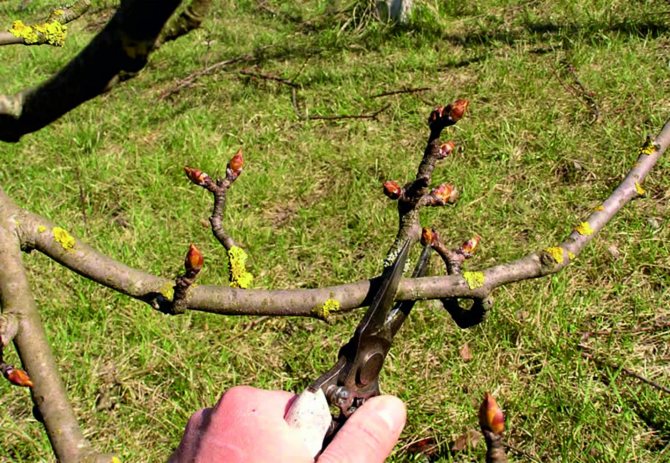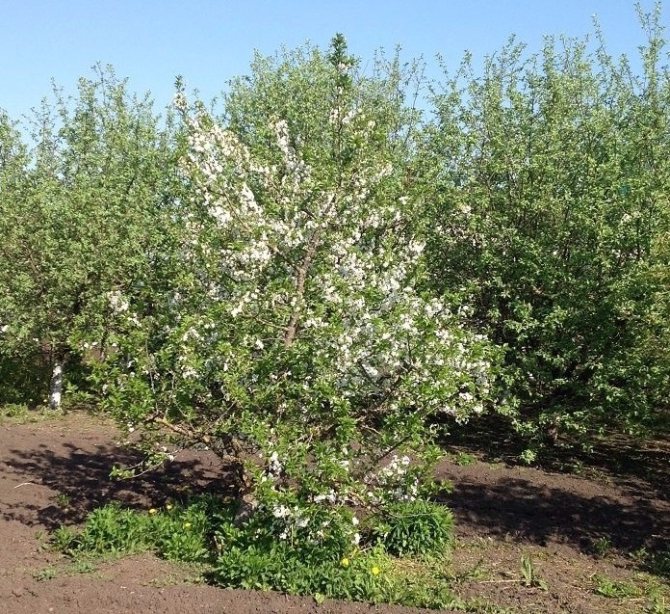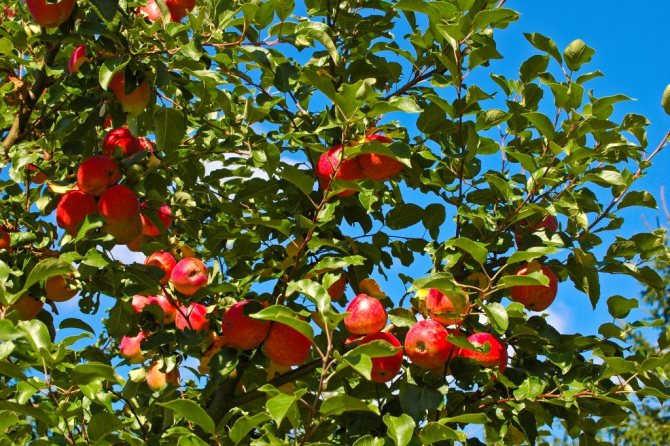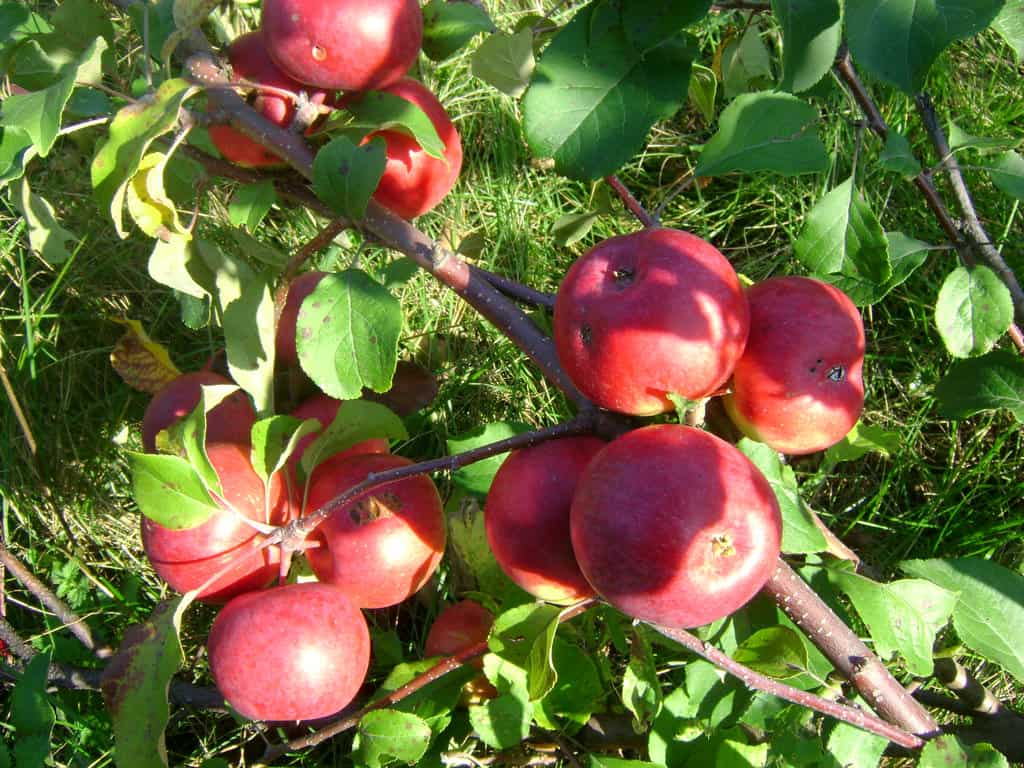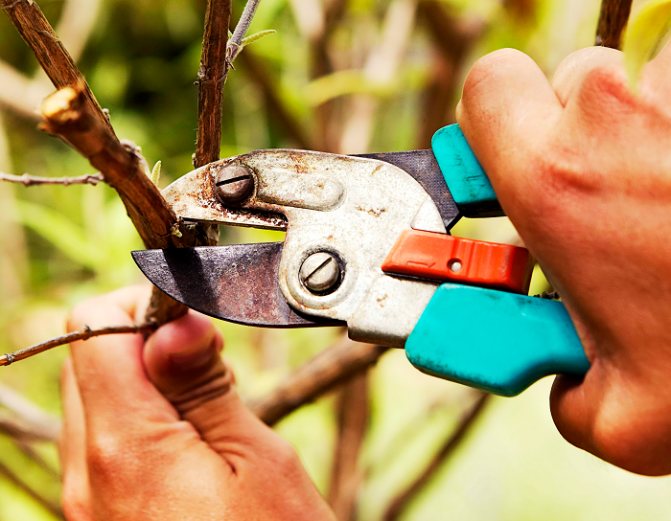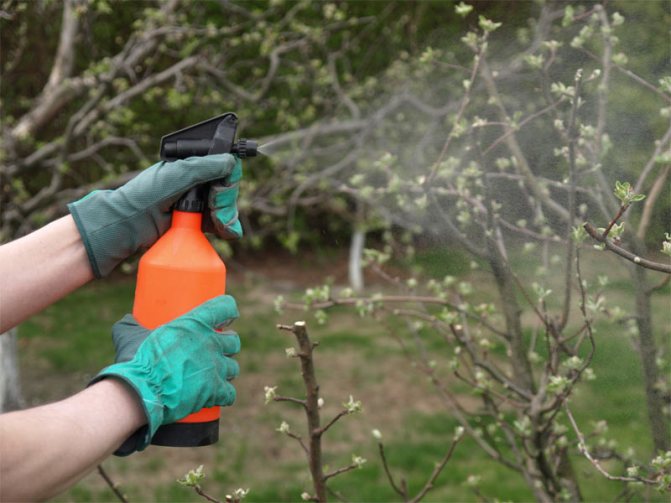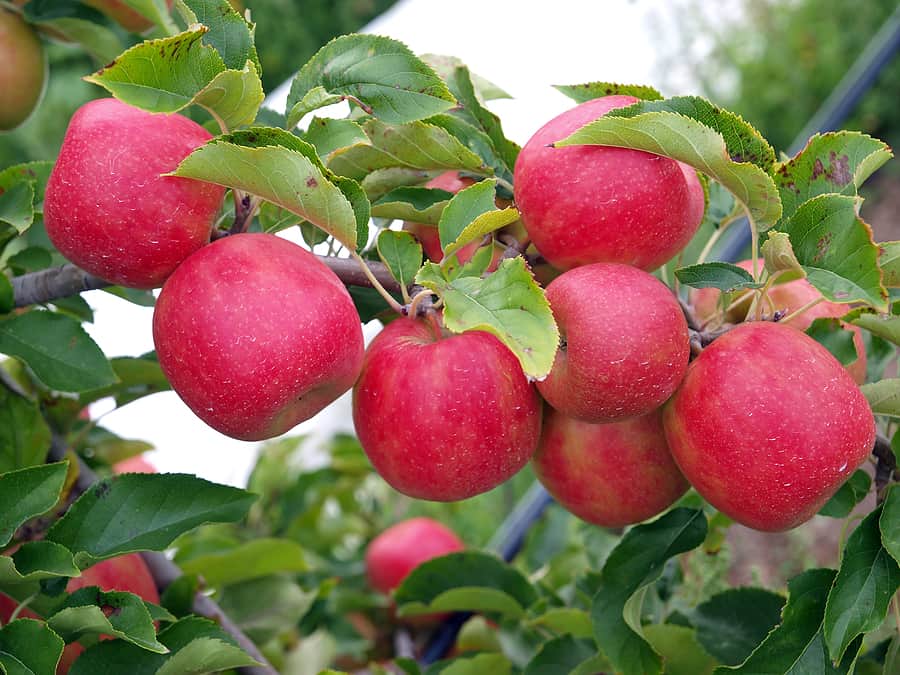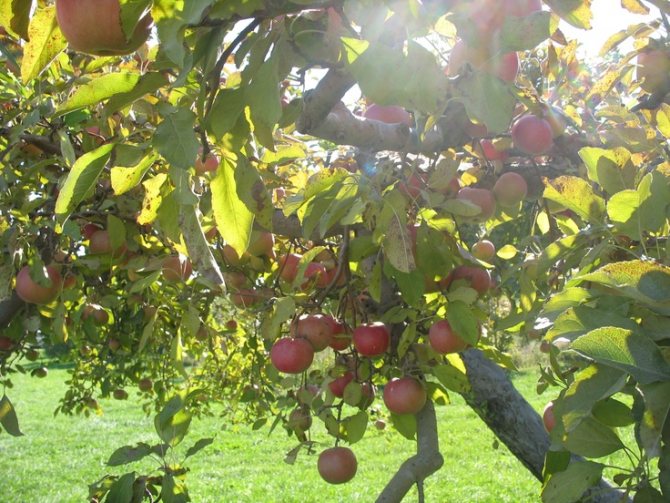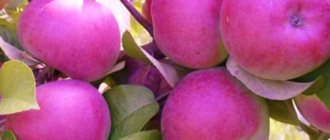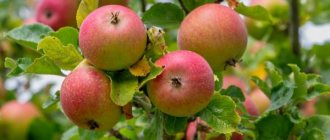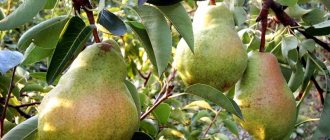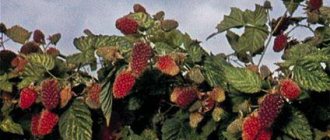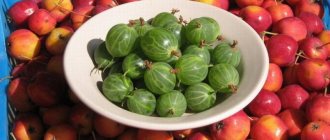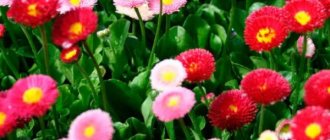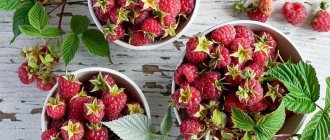The funny name of the Orlik apple tree is remembered well and for a long time. it a very popular variety among gardeners.
Thanks to the active growth of the tree, there is also a quick receipt of tasty and healthy results - apples.
If the question arose, which apple tree to plant on your site in order to eat fresh apples for a long time? Orlik can be the answer. If you follow the recommendations of the content, all needs will be satisfied: without much work, there are many high quality fruits.
Orlik apple trees are suitable ideal for central regions of Russia.
The taste and benefits of Orlik winter apples have long won the hearts of amateurs and professionals in gardening.
Description
Back in 1959, at the fruit and berry station of the Oryol region, breeders took the Bessemyanka Michurinskaya variety and the Mekintosh (Macintosh) variety, crossed them and for the first time received a winter ripening variety with a bright taste and aroma. The name "Orlik" is derived from the territory of the birth of an apple tree with new varietal qualities.
Orlik fruits:
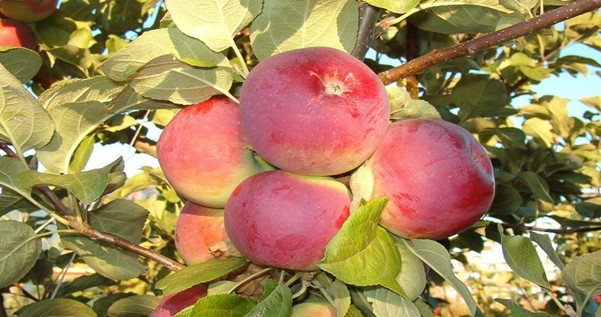
Fruits of the Orlik variety.
For ten years painstaking work on three extremely important indicators:
- Frost resistance,
- High yield,
- Virus resistance.
Despite the resistance inherent in varietal characteristics, the prevention of possible tree diseases is mandatory:
- Spraying in early spring with karbofos from green aphids and red ticks;
- Before the appearance of flowers on a tree, processing with Bordeaux liquid from powdery mildew, fruit rot and scab;
- Whitewashing of trunks from pests in the bark, lichens and fungi to a height of 110 cm.
Attention! Apple trees of this variety can easily endure winters with frosts of 30 degrees, if the owner has taken preventive measures.
History
The first Russian breeder of fruit crops was A.T. Bolotov, who already in 1801 described in detail many varieties of apple and pear trees, including those bred by himself. All further work of scientists was aimed at creating apple trees that are resistant to harmful diseases, tolerate cold Russian winters well and have tasty fruits.
At the All-Russian Scientific Research Institute for Breeding Fruit Crops (Oryol Region) under the leadership of E.N. Sedov, more than 60 varieties of apple trees were bred, many of which are successfully grown in industrial and country gardens. The Orlik variety was obtained in 1959-1968 from crossing the geographically distant Mekintosh and Bessemyanka Michurinskaya apple trees. Authors - E.N. Sedov, T.A. Trofimova. Since 1970, Orlik has been undergoing tests, as a result, the main characteristics have been significantly improved: frost resistance, yield and disease resistance. In 1986, the variety was entered into the State Register for the North-West, Central and Central Black Earth Regions.
Apple Orlik - a variety of Russian selection with high taste
additional characteristics
Height
Apple Orlik needs little space:
- The trees are medium-sized with smooth bark,
- They grow in height no more than 5 meters.
- Skeletal branches diverge from the trunk horizontally with the ends raised up.
Crown width
The crown itself in an adult tree has spherical shape, relatively wide, up to 2 meters. The dark green leaf blades are round and large, the veins are clearly visible.
Winter hardiness
The apple orchard from Orlik is very resistant to severe frost - this is one of the distinctive advantages of the variety.
However, it is better to mulch the soil with humus around the trunk and wrap it with nylon or sackcloth from spring sunburn and rodents.
Pollinating varieties
Apple variety Orlik needs special pollination, since it does not apply to self-pollinated varieties.
For cross-pollination the following apple varieties work well:
- Bogatyr,
- Reneth,
- Northern signal,
- Moscow winter,
- Chernenko.
In order not to purchase them on purpose and to avoid additional costs, you can ask your neighbors what varieties of apple trees they grow.
Self-fertility
Orlik belongs to self-fertile varieties, does not depend on weather conditions. Orlik has a high fruiting level.
A fifteen-year-old tree is capable of producing a crop of 100 kg per season. The maximum harvests were recorded at 120 kg per tree. One apple can weigh from 110 to 200 grams.
Tasting assessment
4.1 points out of 5. Tasters note unique sweet harmonious taste with a slight sourness of tender creamy pulp. Each fruit contains more than 150 mg of trace elements and a whole vitamin complex, as well as sugars and pectins.
Important! Orlik apples are recommended for use for dietary purposes and for metabolic disorders in the body. They are included in the diet for the prevention of atherosclerosis and after heart attacks.
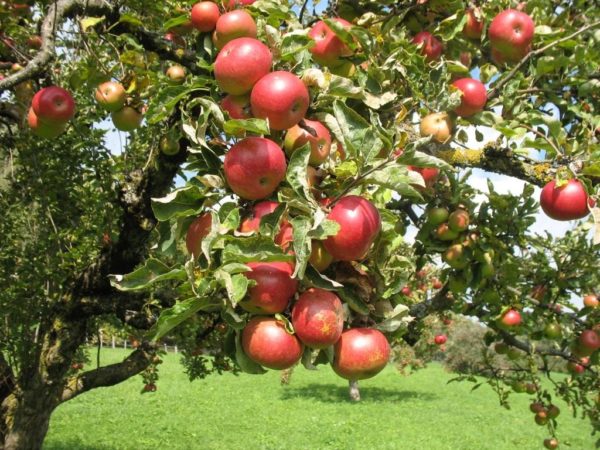

Apples on the branches.
disadvantages
The only ones two inconveniences in the care and maintenance of this variety:
- If you miss the moment of fruit ripening, the apples will partially crumble to the ground, they must be collected so as not to breed rot under the tree;
- Having unregulated rest periods without fruiting.
Summer
This collection contains low-growing apple trees for the Moscow region, which ripen at the end of summer and are practically not stored. But these hybrids are mostly unpretentious and can be grown in different regions. A short warm season is enough for them to mature.
Melba
The low growth of an apple tree does not affect its fertility and fruit quality in any way. Apples are medium in size, sometimes even large. Their shade is lemon green, with a slight red blush. A special feature is the pulp of the fruit: very tasty, with a caramel flavor. The tree is not self-pollinating and needs neighbors blooming at the same time. Fruits lie for a long time, by the standards of summer varieties, up to 100 days.


Apple-tree Melba.
Candy
The variety is high-yielding and unpretentious, yields a large number of tasty fruits. Fruits are small, sometimes slightly smaller than average. Their shape is correct, light skin and a surprisingly pleasant apple aroma. Harvesting usually takes place in early August, but fruiting may shift under adverse weather conditions.
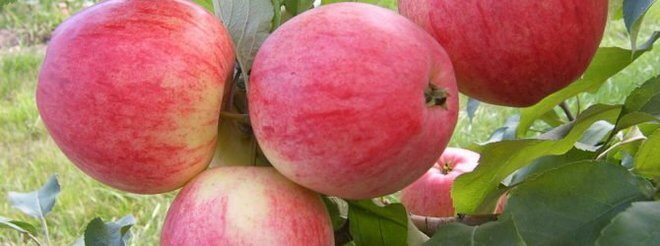

Apple-tree varieties Candy.
The president
A small tree can be grown as a columnar species. There are not very many fruits, maybe up to 25 kg, but the apples are tasty and large. The variety is unpretentious and does not need special treatment. Not even afraid of recurrent frosts.


Columnar apple-tree President.
Gardeners reviews
Denis: “We have a young family, five years ago they began to develop a small suburban area in the Leningrad region. There was no experience. We looked for information about the variety: description, photo, reviews, planting and how it is done. Three Orlik apple trees were planted along the 10-meter fence. In the second year after planting, the apple tree gave out color and several fruits.
Every spring, from the outside, they look like ornamental trees with red and then pink flowers. The neighbors are surprised. The trees grew fast, take up a little space. There are enough apples until spring, we eat them fresh. We know that it is possible both in compote and in jam, but it is better to give out fresh fruit for children, especially in winter with a lack of vitamins.
We love our eagles, we recommend to everyone not only for tasty fruits, but also for easy care. "
Michael: "Orlik is a variety of apple trees that have only advantagesif you know what to do and when. The trees are not tall, picking apples from a branch is convenient without any ladders and stepladders. We have two apple trees, they bought them, as they looked at the photo and description of the variety. Until March, just get apples, goodies. Renet's neighbors help our Eagles to pollinate. Since August we have been eating apples straight from the branch, they are delicious and delicious. "
Marina: “I read about Orlik’s shortcomings when I studied the description, photo, but didn’t find it in my life. The variety does not require any special hassle. The site near Pskov is light, with a slight slope. Three apple trees have been planted, they are more than 10 years old. Between them there are beds with vegetables, there is enough light for everyone to ripen: cabbage, carrots, and apples.
We collect 50 kg of apples from each tree in September... We carefully put red apples in wicker baskets, they are perfectly stored. Last winter we experienced three days of 40-degree frosts. The plum froze, but the Orlik apple trees survived. "
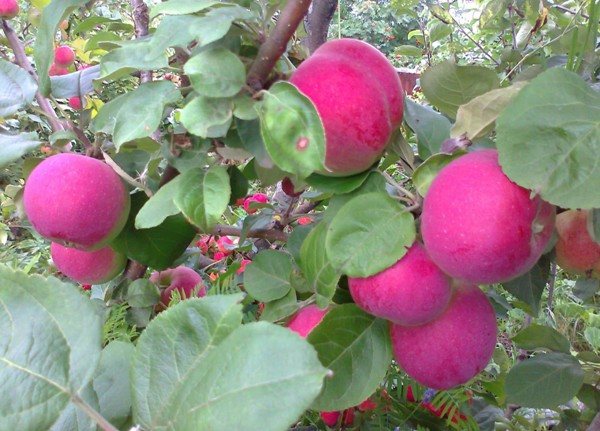

Orlik apple-tree.
Winter
Winter dwarf apple trees for the Moscow region are usually harvested in mid-autumn. If the conditions are right, they can be stored even until the next season.
Grushovka
The variety is one of the most immune to diseases and pests. Fruiting is small, rather late, the first fruits can be harvested only 5 years after planting. Fruits are small and small, but very tasty, sweet, with subtle acidity and persistent aroma.
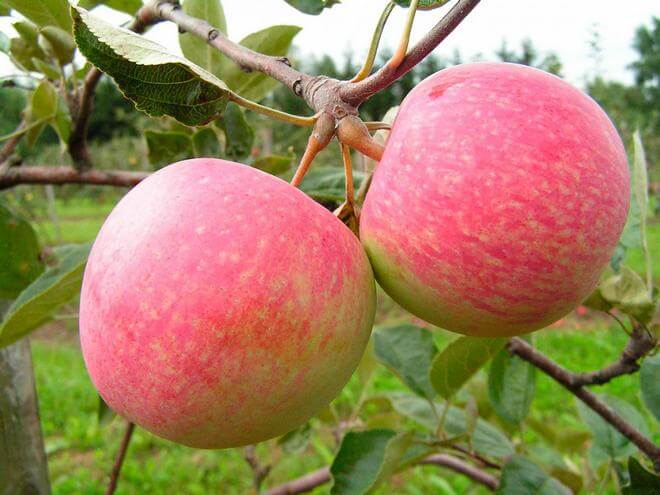

Apple tree Grushovka.
Bogatyr
The tree is not tall, has a very abundant growth, and therefore needs regular pruning. It will also help to improve fruiting. An apple tree with a spreading crown is resistant to low temperatures. The fruits are small, bright, yellow-red, tasty and have a long shelf life.


Apple-tree of the Bogatyr variety.
Moscow necklace
A small apple tree that is completely covered with beautiful burgundy fruits by the end of September. They are delicious, sweet and juicy. The variety is resistant to low temperatures, even the youngest. The tree is not afraid of scab at all.
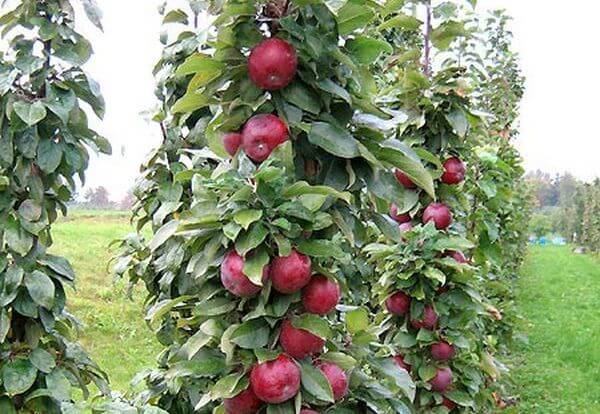

Apple variety Moscow necklace.
Arbat
Column-shaped undersized variety, while very high-yielding. Fruits are medium in size, round, yellow-scarlet. The taste of the pulp is very pleasant, sweet and juicy.
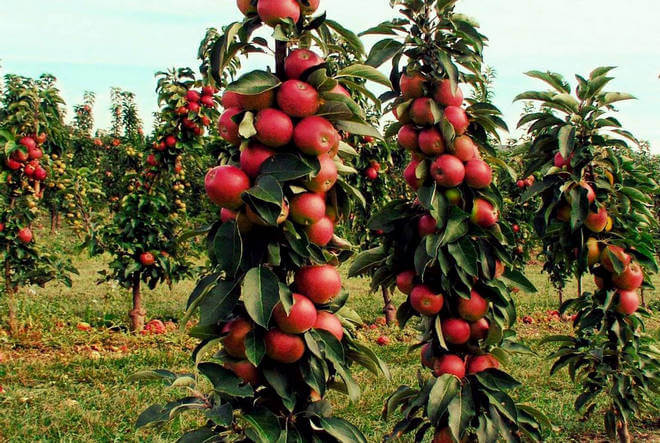

Apple tree Arbat.
Bolero
Hybrid self-fertile semi-dwarf variety, but with a large amount of yield. Harvesting takes place at the end of September, fruits are stored for more than six months. The tree itself is resistant to low temperatures and recurrent frost.
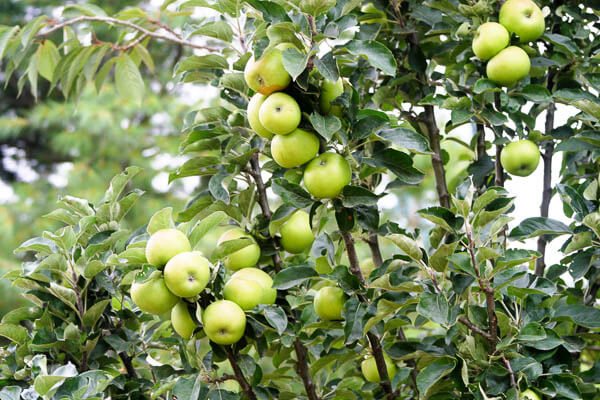

Bolero apple variety.
Landing
Timing
The seedlings are placed in prepared soil. in September-October.
Features of the
When choosing a place for apple plantings, pay attention to the fact that the site is not low-lying, away from water bodies and groundwater no closer than two meters from the roots of the tree.
Important! Waterlogging of the root system leads to fruit rotting in the future.
In small areas, Orliki will be well and compactly located at a distance of two meters from each other.
Ideal potting mix:
- A little clay
- Sand,
- Peat,
- Humus and compost.
When planting a seedling in a hole, the root collar should be 7 cm higher than the ground level. The root system is well straightened and covered with nutritious soil. Tamp and pour at least 5 buckets under the seedling - the next mandatory steps when planting an apple tree.
Selection of seedlings
You can buy Orlik apple seedlings in the garden center or nursery. You can order them in online stores, but there is a high probability of getting low-quality planting material.
When buying, you need to pay attention to several nuances:
- the root system must be strong and solid, without sagging and damage;
- lack of traces of mold and rot;
- seedling height - 1.5 m;
- the presence of a healthy root collar;
- number of branches - 5 or more;
- no damage to the bark.
Important! Before transportation, the roots must be wrapped with a damp cloth and placed in a plastic bag, the shoots are tied to the trunk.
Care
In order for the tree to grow evenly, pegs are installed on both sides and a seedling is tied to them. In a couple of years, the structure can be dismantled.
Pruning and shaping the crown
Spring sanitary cleaning of the crown is required for all trees, Orlik apple trees are no exception.
All dry branches affected by diseases or pests are removed from them. Thinning the crown increases the yield of the apple tree.
It should be remembered that there is also a limitation in this matter: the maximum volume for cutting branches is no more than a quarter of their total number.
Top dressing
In the first year, food will be sufficient.
From the second year, in the spring they feed Orlik apple trees with urea and ammonium nitrate, scatter wood ash around the trunk, slightly digging up the soil.
In autumn adult trees are given liquid fertilizing from mullein with the addition of superphosphates and ammonium nitrate, pouring a bucket under the trunk.
What if the apple tree does not bloom or bear fruit?
Sometimes gardeners are faced with the fact that a planted plant does not bloom and does not bear fruit. There may be several reasons for this:
- Instead of an apple tree, something else grows. This is possible if the tree was not bought in an official nursery.
- Improper care and unfavorable conditions. The apple tree grows in the shade or in the sun, draft, too close to groundwater. Perhaps the wrong pruning is carried out, the shoots do not have time to grow and form buds.
- The root collar was buried in the ground during planting, the plant cannot fully develop.
- Improper feeding: little or a lot of fertilizer.
- The plant is damaged by pests or fungal disease
To get a flowering plant and a rich harvest, you must:
- Assess the conditions for growing an apple tree: is there enough light, shade, is there any near groundwater.
- Stop pruning shoots for a couple of years.
- Carry out prophylaxis and treatment with insecticides or fungicides. Pre-inspect for the presence of pests and fungal infections.
- Analyze a lot or a little and what fertilizers are applied. Plants over 2 years old require superphosphates, potassium supplements, but nitrogen will have to be abandoned.
- Stop watering too much, take more breaks.
Usually a change of care or a transplant will solve the problem.
Features of ripening and fruiting
The beginning of fruiting
After planting the apple trees, it will pass only 4 years old and an excellent harvest can be reaped. Experienced gardeners claim that 45 kg matures on a tree at the age of 5-7 years.
Feature! It is better to remove flowers in the first year from an apple tree by 80% in order to increase the rate of survival of a young tree.
Bloom
Orlik apple trees bloom in the spring - early summer. Fragrant large flowers bloom first red, then delicate pink.
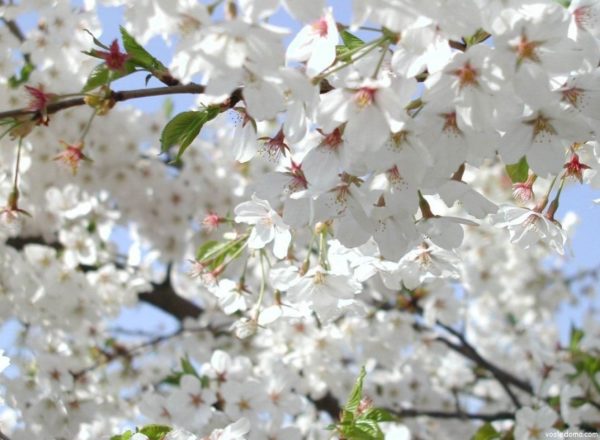

Blooming apple tree.
Ripening terms
The fruits are harvested along with those varieties that ripen in the fall, usually in mid-September.
Fallen apples will not lie for a long time, it is better to put them into processing.
Apples with stalks are placed in 2-3 layers in wooden boxes carefully, without damaging the skin. Sometimes they are sprinkled with clean sawdust.
Then they are placed in a cellar, refrigerator or attic, at a temperature no higher than 5 degrees.
Fruit appearance
Fruits are slightly conical in shape, medium in size.
Ripe apples are yellow with pink spots on the sides. Under the dense skin with a waxy coating, the pulp is juicy and dense. The wax coating protects the fruit from harmful bacteria and fungi.
Storage periods
In excellent presentation, apples lie in baskets and boxes in a thin layer at low temperatures until March.
Autumn
Usually, the collection of fruits of the autumn variety takes place in September. Depending on the varieties, there may be a different shelf life: from a month to three. The selection below contains the best dwarf varieties for the Moscow region.
Gin
The dwarf hybrid is very small, in an adult state, its growth is about 2 meters. Fruiting is quite abundant for such a compact tree. The apples are large, of the same size, bright red in color. The trees are unpretentious, they only need support and supports so that the branches do not break under the weight of large fruits.
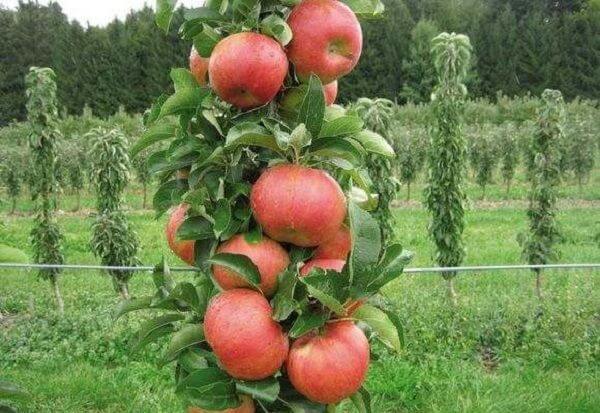

Apple tree Gin.
Zhigulevskoe
A compact apple tree gives off its first fruits after 3 years. Fruits are larger than large, they can even weigh 350 grams. Their appearance is quite attractive: golden, with red blurred stripes. The pulp is coarse, very juicy, and has a pleasant taste. The tree is highly resistant to diseases and pests, but it needs to be sheltered from the cold.


Zhigulevskoe apple variety.
Steifling
It is also called the Autumn Striped. The apples are medium-sized, oval with stripes. The collection of delicious fruits is carried out in September, they can lie for two months. An important feature of the apple tree is its superficial root system, which can freeze. Therefore, the trunk circle is mulched and covered.


Apple variety Steifling.
Glory to the Winners
The apple tree is of medium height, can reach a height of 3 meters. She is picky and tolerates low temperatures well. Fruiting is abundant and regular, the fruits are medium to large. Their pulp is very juicy, sweet and sour with a delicate aroma.


Apples Glory to the Winners.
Features of growing varieties in the regions
Since the end of the last century, apple trees of the Orlik variety have densely entered garden farms and private garden plots of the Central Region, Central Black Earth and North-Western Regions.
Great popularity is won by the compact size of the tree and high yield.
Orlik is successfully grown in the suburbs, in the regions of the middle lane and in the Urals.
Siberia is less suitable for cultivation of this variety of apple trees, since winter very low temperatures can be maintained for a long period, which will negatively affect the development of the tree and its fruiting, even if all preventive measures are taken.

